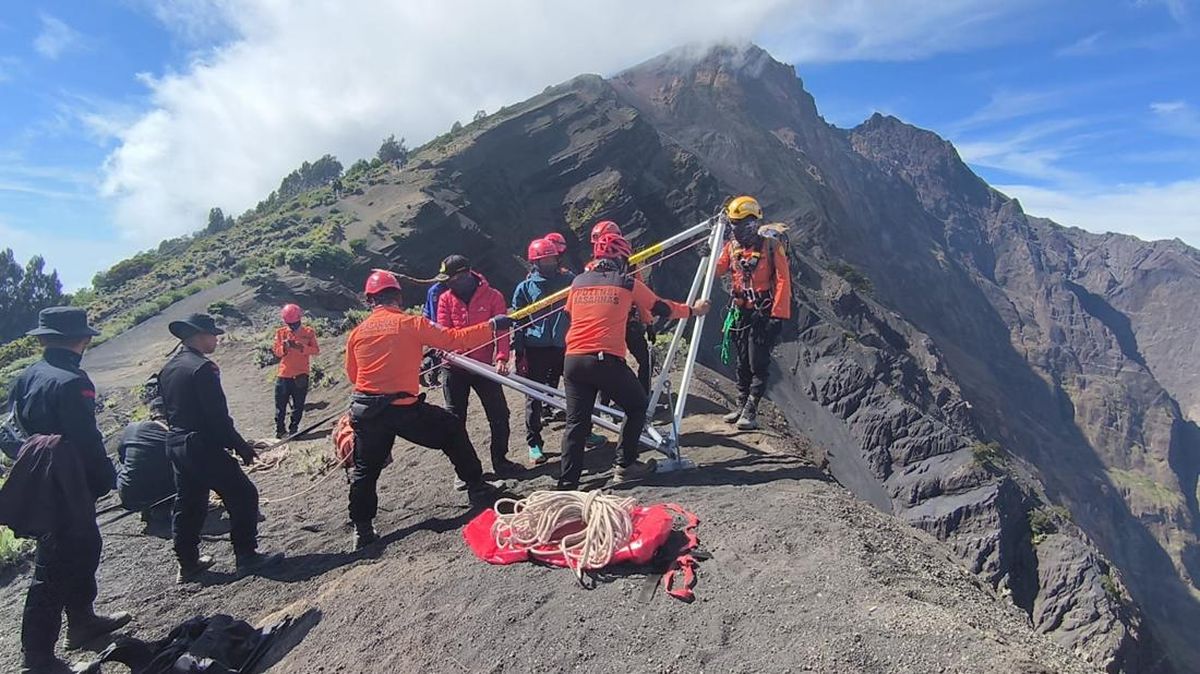
TEMPO.CO, Jakarta - A research revealed the fingerprint of a prehistoric human, approximately 43,000 years old, attached to a granite pebble. The fingerprint was detected on a red mark on a 21.4 cm x 11.3 cm x 7.6 cm pebble which contains numerous quartz minerals.
"The pebble found in San Lzaro rock-shelter (Segovia, Central Spain), is the oldest non-utilitarian object known with a fingerprint made in Europe," cited from the abstract of the scientific article published in the journal Archaeological and Anthropological on Saturday, May 24th, 2025.
The research is documented in a scientific article titled "More than a fingerprint on a pebble: A pigment-marked object from San Lzaro rock-shelter in the context of Neanderthal symbolic behavior". This study also revealed the symbolic behavior of prehistoric humans known as Homo Neanderthals and their cognitive abilities at the time. Homo Neanderthal was first discovered in the Neander Valley, Germany.
The location of the San Lzaro rock-shelter site is in the middle of the Iberian Peninsula in the Eresma River valley sector. The place was formed into a karst mass developed in dolomite limestone. This area is less than 400 meters away from other contemporary Mousterian sites which revealed activities between 44,000 and 41,000 years ago, such as in Abrigo del Molino rock-shelter and Abrigo del Molino superior.
"Evidence of Paleolithic occupation by Homo sapiens has not been found at the site, emphasizing the intense presence of Neanderthals in the valley during the Marine Isotope Stage 3 (about 60,000 to 30,000 years ago)," as written in the scientific article.
The studied stone object comes from layer H, one of the 16 lithostratigraphic layers at the site. The age of the soil layer is around 43,000 to 42,300 years. The discovery of the fingerprinted stone occurred in July 2022 during excavations from 2021 to 2023. Subsequently, the research team conducted in-depth analysis, including scanning and fingerprint shape analysis.
According to the researchers, the identified fingerprint at a point called oker-after multispectral analysis, is undoubtedly made by a Neanderthal, a human who lived at the time in Europe. The red mark was identified as a drawing that matches a fingerprint and likely originated from an adult male's hand.
From the identification results, the red ochre is a natural pigment containing iron oxide and clay minerals. Its shape is circular dots and found only on one stone. Multispectral analysis with UV reflectography showed reddish lines (ridges) and white lines (valleys) that are roughly parallel.
"The average width of the reddish lines is 0.48 millimeters, with a minimum range of 0.39 millimeters and a maximum of 0.61 millimeters," according to the scientific article.
The strengthened assumption that these lines are fingerprints is a comparison with modern human fingerprints. The research team also compared it with police databases showing that the detected minutiae are compatible with the distal phalanx of the finger (fingertip) or palm area.
The research team hypothesized that the red ochre on the stone was intentionally made by pressing or rubbing it with a finger. Besides, Homo Neanderthal considered this object as a visual symbol or can be considered as portable art in a broad archaeological sense. This indicates the human mind's ability to symbolize, imagine, idealize, and project thoughts onto an object.
"This is also one of the oldest known pieces of information about Neanderthal fingerprints, and the oldest found associated with pigment," according to the research team.
Editor's Choice: Why Washing Hands on Planes Isn't Always Safe, Flight Attendants Reveal
What Are the First and Greatest Inventions in History?
6 hari lalu

If you caught yourself wondering what was the first invention that changed the trajectory of humans' lives, read on to discover more.
Comparison of Life Expectancy Between Cats and Humans
18 Februari 2025

Cats can live for more than 10 years, even up to 15 years if the owner pays attention to their lifestyle and health.
How to Use ChatGPT Effectively for Work, Step by Step
15 Agustus 2024

Learn how to use ChatGPT effectively for work with this step-by-step guide. Boost productivity and enhance your workflow with practical tips.
Bird Flu Human Case is Reported in Colorado
4 Juli 2024

Public health officials in Colorado on Wednesday, July 3, announced an adult man had tested positive for bird flu after reporting mild symptoms,
Climate Change is Killing Us - in More Ways Than One
24 April 2024

We've all heard about climate change's effect on our planet, but what about its catastrophic impact on human health?
Is AI Enabling Our Next Renaissance?
7 April 2024

Europe's Renaissance sparked a flowering of free thought and new ideas in the arts and elsewhere. AI could too.
Scientists Observe Chimpanzees Using Human-like Warfare Tactic
4 November 2023

Chimpanzees and the closely related bonobos are the species nearest genetically to humans.
What Makes Us Human? Study Offers Some Clues
2 Juni 2023

The most comprehensive genomic study ever on primates reveals pivotal genetic traits that are uniquely human.


















































